Simultaneous Head SAR Values
To measure the simultaneous head SAR value, SAR testing is performed on both the cellular and wireless LAN signals separately, and the highest reported SAR result is selected for each test position. These results are then summed together, assuming the antennas are colocated, to determine if the simultaneous SAR is within the safety limit of 1.6 W/kg in the USA. Continue reading after SAR Chart.
| SAR Rank | Phone Model | Simultaneous Head SAR | % Legal Limit |
|---|---|---|---|
1st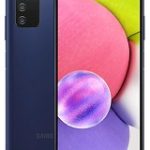 | Samsung Galaxy A03s | 0.83 W/kg | 51.88% |
2nd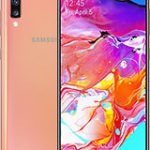 | Samsung Galaxy A70 | 0.89 W/kg | 55.63% |
3rd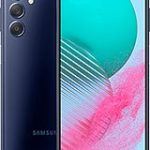 | Samsung Galaxy M54 | 0.91 W/kg | 56.88% |
4th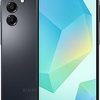 | Samsung Galaxy A16 | 0.94 W/kg | 58.75% |
| 5th | Google Pixel 5 | 0.98 W/kg | 61.25% |
6th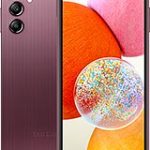 | Samsung Galaxy A14 | 0.99 W/kg | 61.88% |
Tied 6th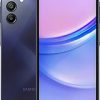 | Samsung Galaxy A15 | 0.99 W/kg | 61.88% |
| 7th | Google Pixel 2 | 1.00 W/kg | 62.5% |
| Tied 7th | Google Pixel 2 XL | 1.00 W/kg | 62.5% |
8th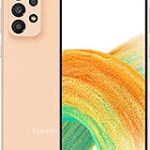 | Samsung Galaxy A33 5G | 1.04 W/kg | 65% |
| SAR Rank | Phone Model | Simultaneous Head SAR | % Legal Limit |
| 9th | GOOGLE PIXEL 6 PRO | 1.05 W/kg | 65.63% |
10th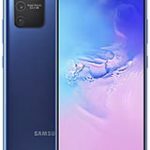 | Samsung Galaxy S10 Lite | 1.06 W/kg | 66.25% |
11th | Samsung Galaxy A50 | 1.12 W/kg | 70% |
12th | SAMSUNG GALAXY A72 | 1.13 W/kg | 70.63% |
13th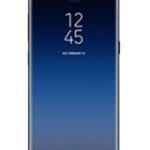 | Samsung Galaxy S9 Plus | 1.14 W/kg | 71.25% |
Tied 13th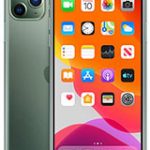 | Apple iPhone 11 Pro Max | 1.14 W/kg | 71.25% |
14th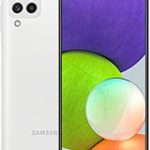 | SAMSUNG GALAXY A22 | 1.16 W/kg | 72.5% |
| 15th | GOOGLE PIXEL 7 PRO | 1.17 W/kg | 73.13% |
Tied 15th | Samsung Galaxy S10 5G | 1.17 W/kg | 73.13% |
Tied 15th | Samsung Galaxy S21 Ultra | 1.17 W/kg | 73.13% |
| SAR Rank | Phone Model | Simultaneous Head SAR | % Legal Limit |
16th | SAMSUNG GALAXY A32 5G | 1.19 W/kg | 74.38% |
| 17th | Google Pixel 5A 5G | 1.21 W/kg | 75.63% |
Tied 17th | SAMSUNG GALAXY A51 5G | 1.21 W/kg | 75.63% |
18th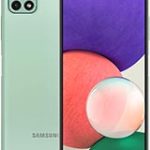 | SAMSUNG GALAXY A22 5G | 1.23 W/kg | 76.88% |
19th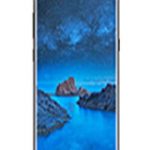 | Samsung Galaxy S9 | 1.25 W/kg | 78.13% |
20th | SAMSUNG GALAXY A14 5G | 1.27 W/kg | 79.38% |
21st | Samsung Galaxy A23 4G | 1.28 W/kg | 80% |
Tied 21st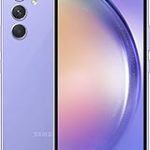 | Samsung Galaxy A54 5G | 1.28 W/kg | 80% |
22nd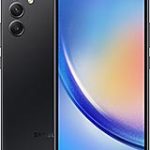 | Samsung Galaxy A24 4G | 1.33 W/kg | 83.13% |
Tied 22nd![apple-iphone-13-mini[1]](https://www.rfsafe.com/wp-content/uploads/2020/12/apple-iphone-13-mini1-66x66.jpg) | Apple iPhone 13 Mini | 1.33 W/kg | 83.13% |
| SAR Rank | Phone Model | Simultaneous Head SAR | % Legal Limit |
Tied 22nd![apple-iphone-13[1]](https://www.rfsafe.com/wp-content/uploads/2020/12/apple-iphone-131-66x66.jpg) | Apple iPhone 13 | 1.33 W/kg | 83.13% |
23rd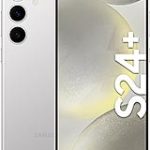 | Samsung Galaxy S24 Plus | 1.34 W/kg | 83.75% |
24th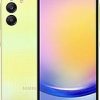 | Samsung Galaxy A25 | 1.35 W/kg | 84.38% |
Tied 24th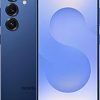 | Samsung Galaxy S25 | 1.35 W/kg | 84.38% |
Tied 24th | Apple iPhone Xs | 1.35 W/kg | 84.38% |
Tied 24th![apple-iphone-13-pro[1]](https://www.rfsafe.com/wp-content/uploads/2020/12/apple-iphone-13-pro1-66x66.jpg) | Apple iPhone 13 Pro | 1.35 W/kg | 84.38% |
Tied 24th | Apple iPhone 16 Plus | 1.35 W/kg | 84.38% |
25th | Samsung Galaxy S21 FE | 1.36 W/kg | 85% |
26th | Apple iPhone 12 Mini | 1.37 W/kg | 85.63% |
Tied 26th | Apple iPhone 12 Pro | 1.37 W/kg | 85.63% |
| SAR Rank | Phone Model | Simultaneous Head SAR | % Legal Limit |
Tied 26th | Apple iPhone 14 PLUS | 1.37 W/kg | 85.63% |
27th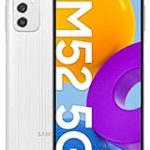 | SAMSUNG GALAXY M52 5G | 1.38 W/kg | 86.25% |
Tied 27th | Apple iPhone 12 | 1.38 W/kg | 86.25% |
28th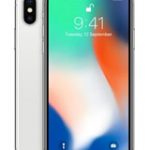 | Apple iPhone X | 1.39 W/kg | 86.88% |
Tied 28th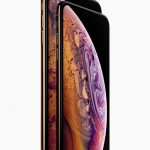 | Apple iPhone XS MAX | 1.39 W/kg | 86.88% |
Tied 28th | Apple iPhone 12 Pro Max | 1.39 W/kg | 86.88% |
29th | Apple iPhone SE 3 (2022) | 1.40 W/kg | 87.5% |
Tied 29th | Apple iPhone 14 | 1.40 W/kg | 87.5% |
Tied 29th | Apple iPhone 14 Pro Max | 1.40 W/kg | 87.5% |
Tied 29th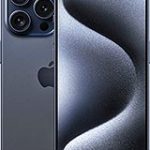 | Apple iPhone 15 Pro | 1.40 W/kg | 87.5% |
| SAR Rank | Phone Model | Simultaneous Head SAR | % Legal Limit |
30th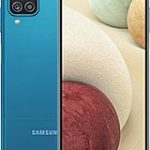 | Samsung Galaxy A12 | 1.41 W/kg | 88.13% |
Tied 30th | Apple iPhone 11 | 1.41 W/kg | 88.13% |
Tied 30th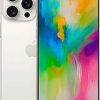 | Apple iPhone 16 Pro Max | 1.41 W/kg | 88.13% |
31st | Samsung Galaxy A13 | 1.42 W/kg | 88.75% |
Tied 31st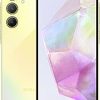 | Samsung Galaxy A35 | 1.42 W/kg | 88.75% |
Tied 31st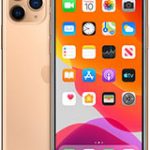 | Apple iPhone 11 Pro | 1.42 W/kg | 88.75% |
32nd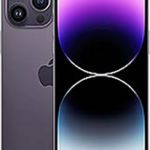 | Apple iPhone 15 Pro Max | 1.43 W/kg | 89.38% |
33rd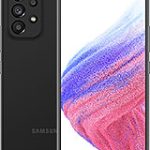 | SAMSUNG GALAXY A53 5G | 1.44 W/kg | 90% |
34th | Samsung Galaxy S21 | 1.45 W/kg | 90.63% |
Tied 34th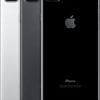 | Apple iPhone 7 Plus | 1.45 W/kg | 90.63% |
| SAR Rank | Phone Model | Simultaneous Head SAR | % Legal Limit |
35th | Samsung Galaxy S20 FE | 1.46 W/kg | 91.25% |
Tied 35th | Apple iPhone 14 Pro | 1.46 W/kg | 91.25% |
36th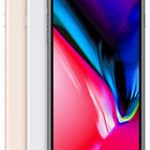 | Apple iPhone 8 Plus | 1.48 W/kg | 92.5% |
37th | Apple iPhone 7 | 1.49 W/kg | 93.13% |
Tied 37th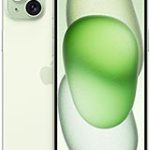 | Apple iPhone 15 Plus | 1.49 W/kg | 93.13% |
Tied 37th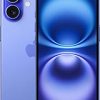 | Apple iPhone 16 | 1.49 W/kg | 93.13% |
38th | Apple iPhone 13 Pro Max | 1.50 W/kg | 93.75% |
Tied 38th | Apple iPhone 15 | 1.50 W/kg | 93.75% |
39th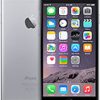 | Apple iPhone 6 | 1.51 W/kg | 94.38% |
Tied 39th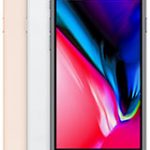 | Apple iPhone 8 | 1.51 W/kg | 94.38% |
| SAR Rank | Phone Model | Simultaneous Head SAR | % Legal Limit |
Tied 39th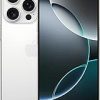 | Apple iPhone 16 Pro | 1.51 W/kg | 94.38% |
40th | Samsung Galaxy S8 Plus | 1.52 W/kg | 95% |
Tied 40th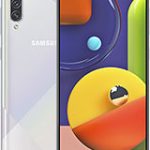 | Samsung Galaxy A50S | 1.52 W/kg | 95% |
41st | Apple iPhone 6s Plus | 1.53 W/kg | 95.63% |
Tied 41st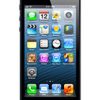 | Apple iPhone 5 | 1.53 W/kg | 95.63% |
42nd | Samsung Galaxy A16 5G | 1.55 W/kg | 96.88% |
Tied 42nd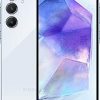 | Samsung Galaxy A55 | 1.55 W/kg | 96.88% |
Tied 42nd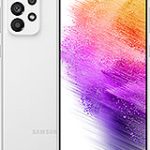 | SAMSUNG GALAXY A73 | 1.55 W/kg | 96.88% |
Tied 42nd | Samsung Galaxy S22 | 1.55 W/kg | 96.88% |
Tied 42nd | Samsung Galaxy S22 Ultra | 1.55 W/kg | 96.88% |
| SAR Rank | Phone Model | Simultaneous Head SAR | % Legal Limit |
Tied 42nd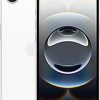 | Apple iPhone 16e | 1.55 W/kg | 96.88% |
43rd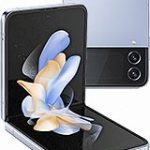 | Samsung Galaxy Z Flip4 | 1.56 W/kg | 97.5% |
Tied 43rd![samsung-galaxy-s21-plus-5g-[1]](https://www.rfsafe.com/wp-content/uploads/2020/12/samsung-galaxy-s21-plus-5g-1-66x66.jpg) | Samsung Galaxy S21 PLUS | 1.56 W/kg | 97.5% |
44th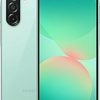 | Samsung Galaxy A26 | 1.57 W/kg | 98.13% |
Tied 44th | Samsung Galaxy A34 | 1.57 W/kg | 98.13% |
Tied 44th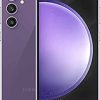 | Samsung Galaxy S24 Fe | 1.57 W/kg | 98.13% |
Tied 44th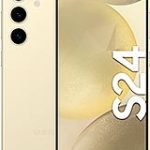 | Samsung Galaxy S24 | 1.57 W/kg | 98.13% |
| 45th | Google Pixel 6A | 1.58 W/kg | 98.75% |
| Tied 45th | Google Pixel 7a | 1.58 W/kg | 98.75% |
Tied 45th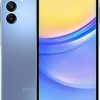 | Samsung Galaxy A15 5G | 1.58 W/kg | 98.75% |
| SAR Rank | Phone Model | Simultaneous Head SAR | % Legal Limit |
Tied 45th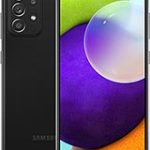 | SAMSUNG GALAXY A52 | 1.58 W/kg | 98.75% |
Tied 45th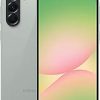 | Samsung Galaxy A56 | 1.58 W/kg | 98.75% |
Tied 45th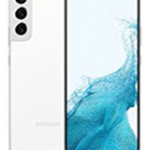 | Samsung Galaxy S23 | 1.58 W/kg | 98.75% |
| 46th | Google Pixel 8 Pro | 1.59 W/kg | 99.38% |
| Tied 46th | Google Pixel 8a | 1.59 W/kg | 99.38% |
| Tied 46th | Google Pixel 9 Pro | 1.59 W/kg | 99.38% |
| Tied 46th | Google Pixel 9 Pro Fold | 1.59 W/kg | 99.38% |
| Tied 46th | Google Pixel 8 | 1.59 W/kg | 99.38% |
| Tied 46th | Google Pixel 9 | 1.59 W/kg | 99.38% |
| Tied 46th | Google Pixel 9 Pro Xl | 1.59 W/kg | 99.38% |
| SAR Rank | Phone Model | Simultaneous Head SAR | % Legal Limit |
Tied 46th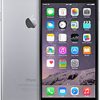 | Apple iPhone 6 Plus | 1.59 W/kg | 99.38% |
Tied 46th | Samsung Galaxy A23 5G | 1.59 W/kg | 99.38% |
Tied 46th | Samsung Galaxy A36 | 1.59 W/kg | 99.38% |
Tied 46th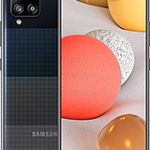 | SAMSUNG GALAXY A42 5G | 1.59 W/kg | 99.38% |
Tied 46th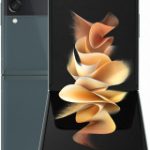 | Samsung Galaxy Z Flip3 | 1.59 W/kg | 99.38% |
Tied 46th | Samsung Galaxy S10e | 1.59 W/kg | 99.38% |
Tied 46th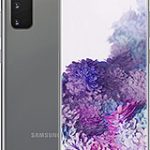 | Samsung Galaxy S20 | 1.59 W/kg | 99.38% |
Tied 46th | Samsung Galaxy S20 Plus | 1.59 W/kg | 99.38% |
Tied 46th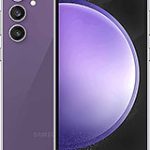 | Samsung Galaxy S23 Fe | 1.59 W/kg | 99.38% |
Tied 46th![samsung-galaxy-s22-plus-5g[1]](https://www.rfsafe.com/wp-content/uploads/2021/12/samsung-galaxy-s22-plus-5g1-66x66.jpg) | Samsung Galaxy S22 Plus | 1.59 W/kg | 99.38% |
| SAR Rank | Phone Model | Simultaneous Head SAR | % Legal Limit |
Tied 46th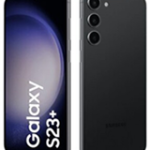 | Samsung Galaxy S23 Plus | 1.59 W/kg | 99.38% |
Tied 46th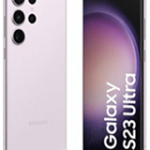 | Samsung Galaxy S23 Ultra | 1.59 W/kg | 99.38% |
Tied 46th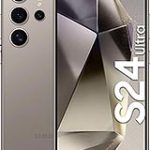 | Samsung Galaxy S24 Ultra | 1.59 W/kg | 99.38% |
Tied 46th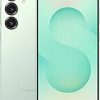 | Samsung Galaxy S25 Plus | 1.59 W/kg | 99.38% |
Tied 46th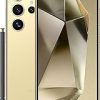 | Samsung Galaxy S25 Ultra | 1.59 W/kg | 99.38% |
Tied 46th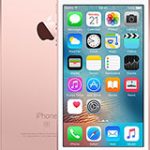 | Apple iPhone SE | 1.59 W/kg | 99.38% |
The SAR measurement procedure and phantom design aim to provide a standardized and repeatable method for measuring the amount of RF energy absorbed by the tissue in the head when several transmitters are active. In recent years, as wireless technologies have become more advanced and more prevalent in our daily lives, there has been an increasing concern about the potential health effects of exposure to radiofrequency radiation. One area of particular concern is the simultaneous use of multiple wireless technologies when held to the head, such as cellular and wireless LAN (WLAN) signals, which can produce a higher level of radiation than either signal alone.
If the simultaneous SAR value is over the limit, the two results are summed again using the Combined Fast SAR feature of ComSEMCAD X software. This is because the hot spots of the two summed measurements may not be exactly on top of each other, so using the software can produce a more accurate result. If the final value is within the safety limit, the phone is considered safe for use.
The test measures a value known as the “simultaneous head SAR”, which represents the amount of radiation absorbed by the head when using a cell phone that simultaneously transmits both cellular and wireless LAN signals.
So what exactly is the simultaneous head SAR value, and how is it measured? Let’s take a closer look at the history and procedures behind this important metric.
History of SAR Testing
SAR testing (short for “specific absorption rate”) is a method of measuring the amount of electromagnetic energy absorbed by the human body when using a wireless device. The practice dates back to the 1980s, when researchers began to investigate the potential health effects of cell phone radiation.
At the time, there was a great deal of uncertainty about the long-term effects of exposure to electromagnetic radiation. Some researchers were concerned that the radiation emitted by cell phones could cause cancer, while others argued that the radiation levels were too low to have any significant impact on human health.
To help settle the debate, researchers developed a standard method for measuring SAR, which involved using a phantom head that simulated the absorption characteristics of human tissue. The phantom head became known as the Specific Anthropomorphic Mannequin (SAM), and it’s still used today for SAR testing.
The Design and Limitations of the SAM Phantom
The SAM phantom is designed to represent the head of an average male U.S. Air Force recruit. It has specific dimensions for the size and shape of the head, as well as the thickness and composition of the skull, brain, and other tissues. The SAM has a skin surface that is made of a material that simulates the dielectric properties of human skin.
During SAR testing, the mobile phone is placed in different positions on the SAM phantom, including the cheek and tilt positions. In the cheek position, the mobile phone is placed under the phantom so that the middle part of the acoustic output touches the center of the ear. The phone is then rotated so that the vertical center line goes through the middle of the phone. The phone is then lifted against the phantom so that the ear and cheek touch it.
In the tilt position, the angle is increased by 15 degrees, and other changes are not made compared to the cheek position. The definitions on how to place the mobile phone under the phantom for the tilt position are explained fully in the relevant standard.
The SAR Measurement Procedure
After the mobile phone is placed on the SAM phantom, a radio frequency (RF) signal is sent to the phone at its highest power level, and the SAR value is measured in watts per kilogram (W/kg). The SAR value represents the rate at which RF energy is absorbed by the tissue in the head that is closest to the phone’s antenna.
The SAR measurement is done using a specific test protocol that involves a reference measurement, an area scan, a zoom scan, and a drift measurement. During the area scan, the SAR value is measured in a grid pattern across the entire head region covered by the mobile phone. The zoom scan is a more precise measurement that measures a small cube around the maximum SAR measured during the area scan.
The reference measurement and drift measurement are done to ensure that the power from the device does not drift during the measurement. The same procedure is done with all test positions and wireless technologies for mobile phone testing.
It is important to note that SAR values are not the only factor to consider when assessing the potential health effects of mobile phone use. Other factors such as duration of use, distance from the body, and specific absorption rates of different tissues, should also be taken into account.
Conclusion
In conclusion, SAR testing is an important tool for assessing the potential health effects of mobile phone use. The use of a standardized phantom and testing procedure allows for accurate and repeatable measurements of the amount of RF energy absorbed by the tissue in the head from mobile phone use. Simultaneous head SAR values are particularly important to consider as wireless technologies become more advanced and more prevalent in our daily lives.
As consumers, it is important to be aware of the SAR values for our mobile phones and to make informed decisions about our use of these devices. By using a mobile phone with a low SAR value and taking steps to reduce exposure, such as using hands-free devices or keeping the phone away from the body, we can minimize the potential health risks associated with mobile phone use.
In summary, SAR values are a valuable tool for assessing the potential health effects of mobile phone use, and it is important for consumers to be aware of these values and take steps to reduce their exposure to radiofrequency radiation.
About Simultaneous Head SAR: What It Is and How It Affects Your Health
As mobile phones have become an integral part of our daily lives, concerns have been raised about their potential effects on our health. One such concern is the amount of radiation absorbed by the head during the simultaneous use of cellular and wireless LAN signals, which is measured by a value known as the “simultaneous head SAR.” In this article, we will take a closer look at what simultaneous head SAR is, how it is measured, and what you can do to protect your health.
What is Simultaneous Head SAR?
Simultaneous head SAR is a measure of the amount of electromagnetic radiation absorbed by the head when using a mobile phone that simultaneously transmits both cellular and wireless LAN signals. When these signals are transmitted at the same time, they can interact and produce a higher level of radiation than either signal alone. This has raised concerns about potential health effects, particularly for long-term users.
How is Simultaneous Head SAR Measured?
To measure the simultaneous head SAR, SAR testing is performed on both the cellular and wireless LAN signals separately, and the highest reported SAR result is selected for each test position. These results are then summed together, assuming the antennas are colocated, to determine if the simultaneous SAR is within the safety limit of 1.6 W/kg in the USA.
If the simultaneous SAR value is over the limit, the two results are summed again using the Combined Fast SAR feature of ComSEMCAD X software. This is because the hot spots of the two summed measurements may not be exactly on top of each other, so using the software can produce a more accurate result. If the final value is within the safety limit, the phone is considered safe for use.
It is important to note that SAR values are not the only factor to consider when assessing the potential health effects of mobile phone use. Other factors such as duration of use, distance from the body, and specific absorption rates of different tissues should also be taken into account.
What are the Potential Health Effects of Simultaneous Head SAR?
The potential health effects of simultaneous head SAR are still a matter of debate among researchers. While some studies have suggested that exposure to radiofrequency radiation may increase the risk of certain types of cancer, such as brain tumors, other studies have found no significant correlation between mobile phone use and cancer.
However, there is growing evidence to suggest that long-term exposure to radiofrequency radiation may have other health effects, such as damage to DNA and changes in brain function. It is still unclear how much exposure is necessary to cause these effects, or how long-term exposure may affect the body over time.
What Can You Do to Protect Yourself?
While the potential health effects of simultaneous head SAR are still a matter of debate, there are steps you can take to protect yourself from unnecessary exposure to radiofrequency radiation. Here are a few tips to keep in mind:
Use a hands-free device: Using a hands-free device, such as a wired headset or Bluetooth earpiece, can help reduce your exposure to radiofrequency radiation by keeping the phone away from your head.
Keep the phone away from your body: When not using your phone, keep it in a bag or purse rather than in your pocket or on your belt. This can help reduce your overall exposure to radiofrequency radiation.
Use speakerphone: Another option is to use the speakerphone function of your mobile phone, which will reduce your exposure by keeping the phone away from your head.
Choose a phone with a lower SAR value: When shopping for a new mobile phone, look for models with lower SAR values. You can find SAR values for most phones on the manufacturer’s website or through the FCC’s SAR database.
Conclusion
In conclusion, understanding the concept of simultaneous head SAR and the measures taken to mitigate the potential health risks is crucial in today’s technology-driven world. While SAR values are a valuable tool for assessing the potential health effects of mobile phone use, it is important to note that there is no conclusive evidence that mobile phones cause any harmful effects. However, it is essential to be aware of the SAR values for our mobile phones and take appropriate measures to reduce exposure to radiofrequency radiation.
As mobile phones continue to play a vital role in our daily lives, it is essential to be well-informed about the potential risks and to adopt responsible usage habits. Choosing mobile phones with lower SAR values, using hands-free devices, and keeping the phone away from the body are some of the measures that can be taken to minimize the risks of radiofrequency radiation exposure.
FAQs
What is SAR testing, and why is it important?
SAR testing is a method of measuring the amount of electromagnetic energy absorbed by the human body when using a wireless device. It is essential to assess the potential health effects of mobile phone use and ensure that the level of RF exposure is within safe limits.
What is simultaneous head SAR, and how is it measured?
Simultaneous head SAR is a measure of the amount of electromagnetic radiation absorbed by the head when using a mobile phone that simultaneously transmits both cellular and wireless LAN signals. It is measured using SAR testing, which involves placing the mobile phone in different positions on the Specific Anthropomorphic Mannequin (SAM) phantom, including the cheek and tilt positions, and measuring the SAR value in watts per kilogram (W/kg).
Are there any health risks associated with mobile phone use?
While there is no conclusive evidence that mobile phones cause any harmful effects, there is a concern about the potential health effects of exposure to radiofrequency radiation. It is essential to be aware of the SAR values for our mobile phones and take appropriate measures to reduce exposure to radiofrequency radiation.
What measures can be taken to reduce the risks of radiofrequency radiation exposure?
Choosing mobile phones with lower SAR values, using hands-free devices, and keeping the phone away from the body are some of the measures that can be taken to minimize the risks of radiofrequency radiation exposure.
In summary, understanding the concept of simultaneous head SAR and the measures taken to mitigate the potential health risks is crucial in today’s technology-driven world. SAR testing is an important tool for assessing the potential health effects of mobile phone use, and the use of a standardized phantom and testing procedure allows for accurate and repeatable measurements of the amount of RF energy absorbed by the tissue in the head from mobile phone use.
Consumers must be aware of the SAR values for their mobile phones and take appropriate measures to reduce their exposure to radiofrequency radiation. By using mobile phones with lower SAR values, adopting responsible usage habits, and taking steps to minimize their exposure, consumers can enjoy the benefits of mobile phone technology while minimizing potential health risks.